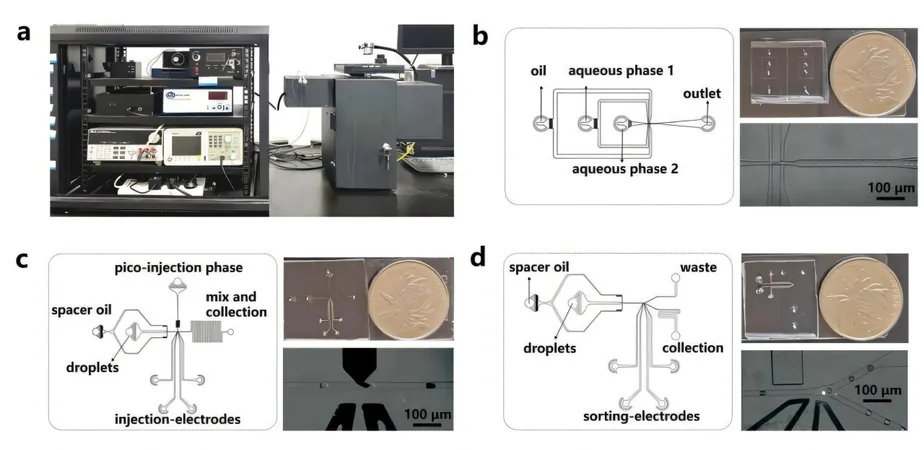
Revolutionizing DNA Amplification: Breakthroughs in Polymerase Efficiency
2025-05-16
Author: Wei
Speeding Up Disease Diagnostics with Cutting-Edge Technology
In the fast-paced world of disease diagnostics, the loop-mediated isothermal amplification (LAMP) technique stands out for its unparalleled speed, specificity, and simplicity. At its core is the Bst DNA polymerase, a key enzyme whose remarkable properties—such as strand displacement activity, thermostability, and catalytic efficiency—are vital for successful amplification, typically performed at temperatures between 60 and 65°C.
Groundbreaking Research from Chinese Scientists
A pioneering research team led by Ma Fuqiang from the Suzhou Institute of Biomedical Engineering and Technology (SIBET) has taken enzyme research to the next level. With a strong focus on molecular modification and advanced screening technologies, they've developed a groundbreaking fluorescence-activated droplet sorting (FADS) platform. This innovative setup utilizes droplet microfluidics to achieve an impressive screening capacity of over 10 million mutants daily at the single-cell level.
Unlocking Potential: Enhanced Bst Polymerase Through High-Throughput Screening
Utilizing this state-of-the-art FADS platform, the researchers devised a novel high-throughput screening protocol tailored specifically for Bst DNA polymerase. This remarkable approach, described in the esteemed journal ACS Catalysis, has set a new benchmark in enzyme evolution.
Unprecedented Findings: Mutants with Enhanced Performance
For the first time, this method enabled the directed evolution of Bst polymerase, leading to the discovery of mutant enzymes that significantly outperform their predecessors. When these superior mutants were integrated into LAMP assays, they not only accelerated reaction times but also exhibited enhanced thermal stability, paving the way for longer enzyme storage and improved diagnostic efficiency.
The Future of Diagnostics is Here!
This groundbreaking research not only marks a significant step forward in enzyme technology but also highlights the potential of harnessing advanced screening methods to revolutionize disease diagnostics. With faster and more reliable testing methods on the horizon, the future of medical diagnostics looks more promising than ever.

 Brasil (PT)
Brasil (PT)
 Canada (EN)
Canada (EN)
 Chile (ES)
Chile (ES)
 Česko (CS)
Česko (CS)
 대한민국 (KO)
대한민국 (KO)
 España (ES)
España (ES)
 France (FR)
France (FR)
 Hong Kong (EN)
Hong Kong (EN)
 Italia (IT)
Italia (IT)
 日本 (JA)
日本 (JA)
 Magyarország (HU)
Magyarország (HU)
 Norge (NO)
Norge (NO)
 Polska (PL)
Polska (PL)
 Schweiz (DE)
Schweiz (DE)
 Singapore (EN)
Singapore (EN)
 Sverige (SV)
Sverige (SV)
 Suomi (FI)
Suomi (FI)
 Türkiye (TR)
Türkiye (TR)
 الإمارات العربية المتحدة (AR)
الإمارات العربية المتحدة (AR)